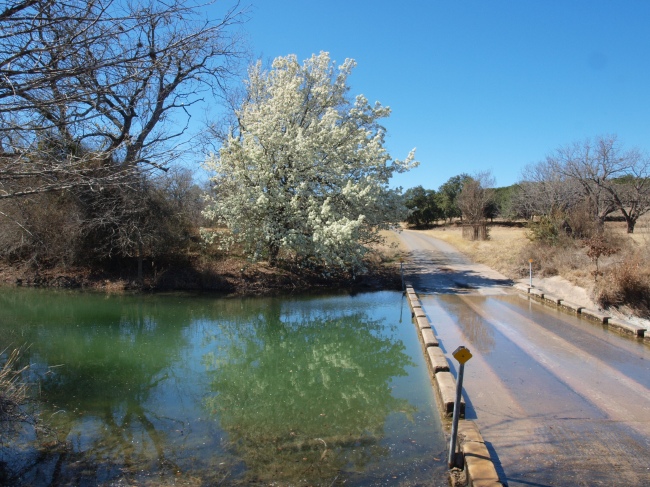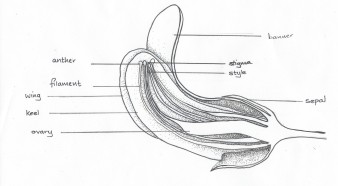It’s been a curiously cold winter here in Texas, while elsewhere in the country has been inundated by unrelenting snow storms. Still the first Spring trees are beginning to flower and the crab apples have been blooming for almost three weeks despite the weather alternating between freezing temperatures as low as 28F and highs near the 80’s. Here the Blanco crabapple (Malus ioensis var. texana), an endemic species of the Texas Hill Country, is blooming next to a tributary of Miller Creek on the Bamberger ranch. This splendid tree is a member of the Rosaceae family and, as it’s genus (Malus) suggests related to the domesticated apple. The characters that place this plant in the Rosaceae family are best seen in its flowers. The blooms are actinomorphic, meaning they are radially symmetrical. They have five petals, as can be seen in the adjacent close up, and five sepals. The flowers have both male and female parts, making them hermaphroditic, and many stamens arranged in whorls. Three stigma and styles (slightly greenish structures at the center of the flower) are evident in this photograph
disappearing into the top of the ovary that will ultimately become the apple once the flowers have been pollinated. The base of the flower, calyx (sepals), corolla (petals) and androecium (filaments of the stamens) essentially fuse to form a hypanthium enclosing the ovary. According to the Ladybird Johnson site, this species is particularly important to a variety of native bees. Naturally the bitter fruit that appear later in the summer are food for a variety of animals. As a harbinger of spring and warmer weather it brightens the dry, cold landscape and it’s bright fresh blooms easily draw the eye against the brown palette of the grasses and olive green cedars.








